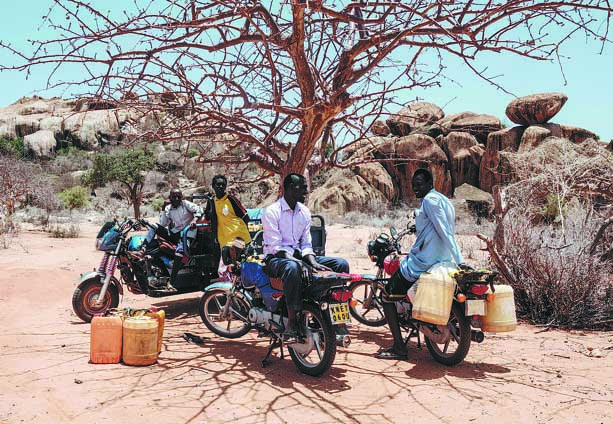Horn of Africa in grip of severe drought


Data from the UN further indicates that the cost of the minimum daily amount of food needed to meet nutritional requirements has increased 66 percent in Ethiopia and 36 percent in Somalia.
Alyona Synenko, a Nairobi-based spokeswoman for the International Committee of the Red Cross, told China Daily that 7.8 million people in Somalia, or nearly half of the country's population, are suffering the devastating consequences of drought.
She said that the communities in Somalia hardest hit by the drought are the same ones suffering from one of Africa's most protracted internal conflicts.
"Having lasted for over 30 years, it shows no signs of loosening its grip," Synenko said. "In fact, we have seen an increase in violence in the central and southern parts of the country, where we concentrate the bulk of our work."
People in these hard-to-reach areas must deal with extreme weather and climate change on their own, as there is no access to essential services, Synenko added.
A statement released by the International Committee of the Red Cross on Sept 13 said that Bay Regional Hospital in the Somalian city of Baidoa admitted 466 children suffering from malnutrition in August, up from 82 in August 2021.
The organization added that children admitted to the hospital would die without the specialized nutritional care they receive.
On Sept 6, the United Nations Children's Fund said that more than 700 children had died in food and nutrition centers across Somalia between January and July.
In response to the worsening situation in Somalia, Synenko said that more than 150,000 families in conflict-affected places have received life-saving cash assistance from the ICRC since the end of last year.
The international community should do more to help people in the Horn of Africa, including Somalia, Synenko said.
She said that in Somalia, those displaced by the drought have received emergency assistance to cover the cost of food and other necessities through a $28 million ICRC program.
"We have scaled up water production since the beginning of the year, helping hundreds of thousands of people. We also support access to primary healthcare through our work with the Somali Red Crescent Society," she said.
However, Synenko said severe droughts in Somalia should stop being viewed and treated as emergency situations, because they have become so frequent that millions of Somalis now accept such extreme weather as normal and must learn to adapt accordingly.
"As a humanitarian organization, we must help them strengthen their resilience. One example of such an endeavor is the support we provide to agricultural cooperatives with training, drought-resistant seeds, farming tools and cash for fuel needed to irrigate," she said.
In Kenya, Synenko said, the organization is working with the Kenyan Red Cross Society to help communities become more resilient in the face of erratic weather patterns.
"We have been distributing relief food and animal feed in four drought-affected counties; 12,000 people received food and over 30,000 received livestock feed," she said. "At the same time, 2,000 households will receive cash support for three months."


















